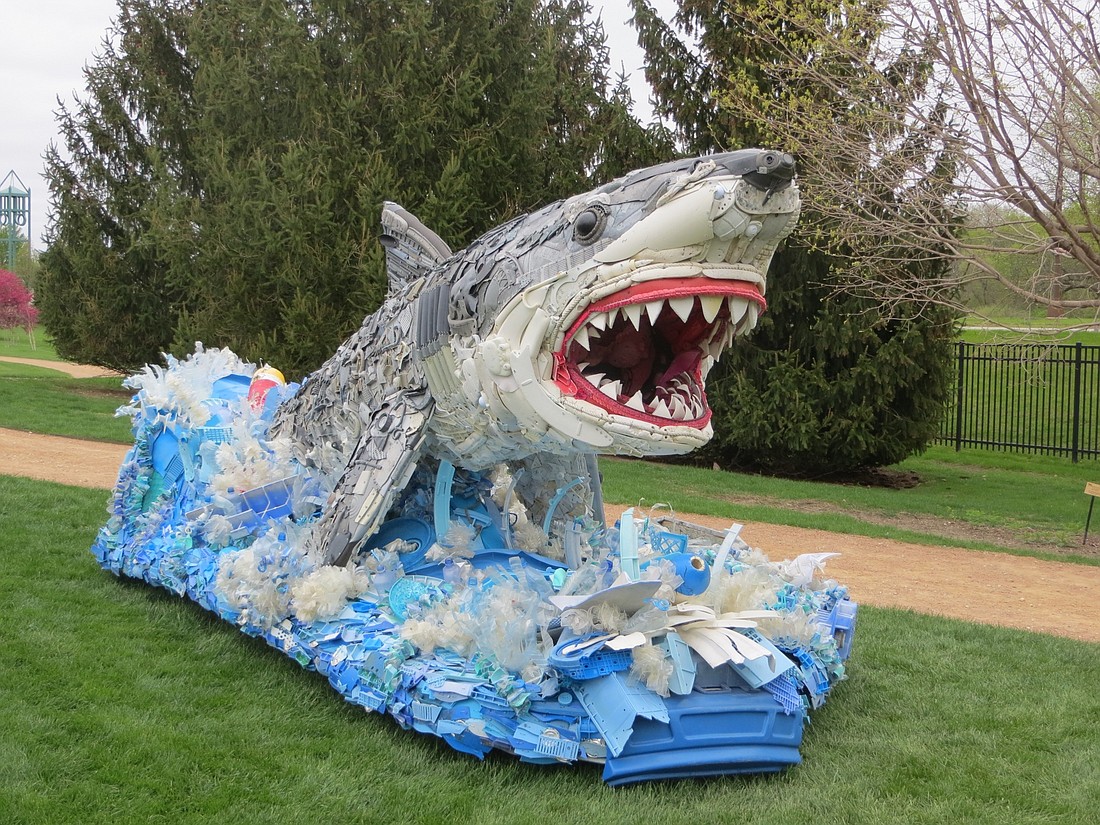- April 25, 2024
-
-
Loading

Loading

They say that one man’s trash is another’s treasure.
And sometimes, that trash can be educational and serve a bigger purpose. In Mote Marine Laboratory and Aquarium’s case, sea debris is the treasure.
Starting Dec. 9, “Sea Debris: Awareness through Art,” featuring Washed Ashore, will be on display at Mote.
The exhibit, on display through June 15, 2018, will feature marine-inspired sculptures crafted out of plastic and other debris found on the Oregon coastline. The pieces are handmade, the biggest of which is 15 feet by 10 feet.
“Honestly, the plastic pollution in the ocean is a huge issue these days,” said Evan Barniskis, Assistant Vice President of Mote Aquarium. “The area of interest is becoming so increased with the public, and we thought this was a great opportunity for us to increase that awareness even further.”
“Washed Ashore,” a nonprofit organization based in Oregon, creates the art to educate audiences about plastic pollution in ocean and other waterways, the organization's website said.
Barniskis said the exhibit will likely feature some local artists as well to engage the entire community. Those works could be made of sea debris or other waste product that didn’t have the chance to make it to the beach or trash can.
“We hope folks take away the message that if they can decrease use of single-use products, especially plastic, and move to items that have multi-use, it’ll help to decrease the waste that’s immediately going into the environment.”
As Mote guests wander through the aquarium, they’ll find the sculptures at various points. So not only are guests being educated on the oceans and Mote’s research, but they will also be educated on the art pieces, Barniskis said.
Barniskis has seen some of the sculptures, and said at first they just look like “beautiful, gorgeous marine-life sculptures,” but upon a closer look, reality hits that these items are made of trash that was collected on a beach.
“Once they get closer and they actually start to really investigate these pieces, they gain an understanding of what’s happening to our oceans and planet by the amount of consumable products we’re using that are becoming waste,” Barniskis said.
Because Mote wants to use this exhibit as an opportunity to engage and educate the public on sea debris, the aquarium is hosting a bevy of events in regards to marine debris.
Starting in January, events will be held throughout the rest of the exhibit’s stay.
On Jan. 25, the Youth Making Ripples Film Festival and Competition will feature short films about marine debris and plastic pollution by middle school and high school students. On Feb. 10, teens can participate in a City Island clean up, on Feb. 26 Mote’s lecture series will start with “The good, the bad and the smelly: an overview of Mote’s Stranding Investigations Program,” and on March 20, a screening of “A Plastic Ocean” will be played. Events continue in April. For a full list and more information, visit mote.org.